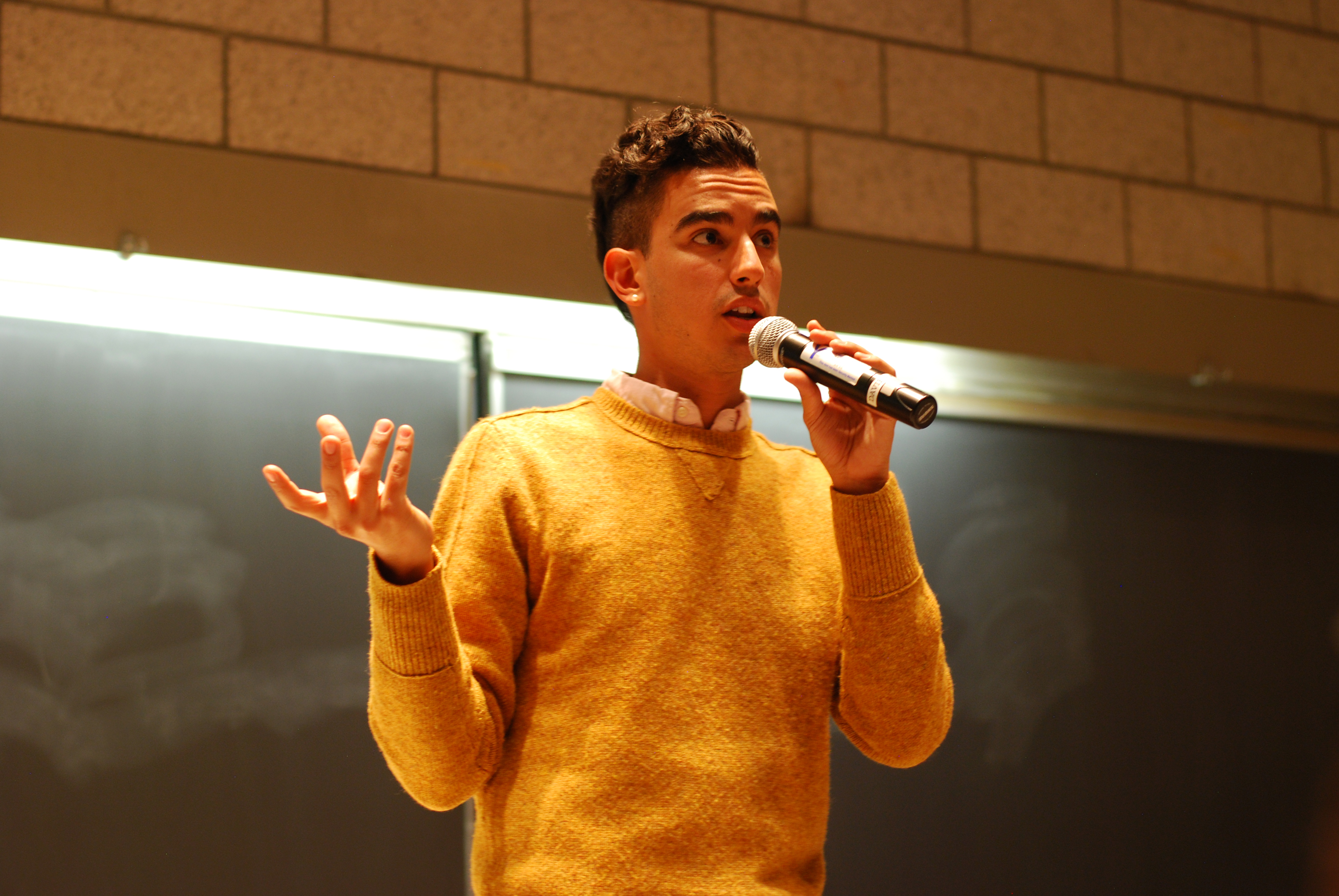
On Wednesday night, an audience of approximately 60 Yale students, faculty members and New Haven residents watched a video of all the lines spoken by people of color throughout the entire Harry Potter series. Although the movies span nearly 20 hours, the clip took less than five minutes.
Dylan Marron, an actor and playwright, created the web series “Every Single Word,” in which each video splices together all of the lines given to actors and actresses of color in films ranging from The Lord of the Rings to Titanic. In Davies Auditorium, Marron spoke about institutionalized racism in TV shows, movies and media at an event organized by Yale Humanist Community — a student organization that discusses ethical issues independent of religious beliefs. Since June 2015, Marron, a voice on the popular “Welcome to Night Vale” podcast, has been creating videos that highlight the scarcity of dialogue given to people of color. Yale Humanist Community Director Chris Stedman contacted Marron over Twitter in August and invited him to Yale.
“I’ve seen the habit of casting whiteness as the default,” Marron said. “Only if there is a specific [type] you’re talking about — a poor person, an enslaved person — then you can talk about color.”
According to Marron, if audiences only have exposure to all-white protagonists, they learn to empathize with white people more than with people of other races. Without more diverse representation, Marron explained, it is more difficult for people of color to view themselves beyond the tropes that Hollywood presents.
He explained that in most major motion pictures, including stories that involve universal themes, actors of color are rarely cast in lead roles. He noted that people of color are sometimes given positions of power in films, as doctors or judges, but these roles are often still peripheral.
Marron, who is Venezuelan-American, first encountered institutionalized racism in casting when he auditioned for the third Home Alone film as a child. Although casting was open to all ethnicities, only the white children moved past the first round of cuts.
“That was the first moment when I realized there were tools built into the system to allow the system on the surface to appear not rooted in racist principles, but to allow it to continue to practice them,” Marron told the News. “Systemic injustice relies on hidden tools to continue to exert power.”
He said in high school he continued to feel the effects of prejudice against actors of color when agents told him he was “too specific” because of his race and that he would never be cast as the “male romantic lead.”
Although he acknowledged that rage at discriminatory casting practices motivated him to create his videos, he said he keeps his videos free of personal commentary and value judgments. He added that he also avoids blaming individuals for casting choices.
Still, Marron has received negative feedback in YouTube comments. Commentators attacked his Harry Potter video and accused him of calling J. K. Rowling racist, he said.
“We have such a hard time talking about systemic issues as a culture because we are so used to pointing the finger at one person,” he said.
After the talk, Elaine To ’19, a fan of Marron’s “Welcome to Night Vale” podcast, said she appreciated Marron’s approach to tackling the issue of racism.
Monica Bunton — a second-grade teacher in a bilingual classroom at Fair Haven Public School and an attendee at the event — said she struggles to find stories with characters with whom her students of color can identify.
“When you look at a lot of traditional children’s picture books, a lot of the characters are white although the stories are telling universal themes,” she said. “When you’re showing and reading these stories to children of color, where are their faces, literally? As a teacher, I have to go out of my way to search for stories that reflect their stories.”
Harry Potter and the Sorcerer’s Stone was released in theaters in 2001.







